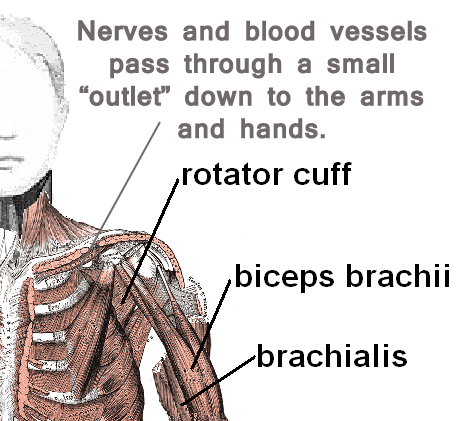By Krissy Brown
20 Feb, 2025
Clinical Case of the Week, Exercise
arm pain, Best physical therapy, Mechanical Diagnosis and Therapies, misdiagnosed, neck pain, Nick Rinard, pain, results, sensitivity in fingers, Thoracic outlet syndrome, TOS
If you are experiencing pain in your neck, shoulders, arms and sensitivity in your fingers it may be thoracic outlet syndrome (TOS).
Get your accurate diagnosis today at Nick Rinard Physical Therapy.
“I experienced numbness in my pinkie and ring finger on both hands.
I had shoulder pain, especially when doing chest exercises.
Thoracic Outlet Syndrome.
The numbness in my finger has gotten better.
My shoulder pain is gone.
I can do chest exercises now without pain.”
Gordon
More
By Megan Plante, DPT
22 May, 2014
Clinical Case of the Week
cervical, clavicle, clinical presentation, complicated, peck minor, Ribs, scalenes, Thoracic outlet syndrome, TOS
Recently, I have had 3 physical therapy patients in the clinic with a complicated clinical presentation. All 3 patients have a different cluster of symptoms and impairments. What they each have in common is that they have upper extremity symptoms that are not of cervical spine (radiculopathy) origin. Instead, their pathology is a result of tight chest and neck musculature, compressing the bundle of nerves that control the movement and sensation of the arm. Clinically, this is known as Thoracic Outlet Syndrome, or, TOS.
What is Thoracic Outlet Syndrome?
- Compression of the artery, vein and/or nerves that pass through the thoracic outlet.
- There are 3 possible locations for the compression to occur:
- In between your scalene (neck muscles)
- In between the clavicle and first rib
- Under the peck minor (chest muscle)
| The most common compression is of the nerves. This results in vague pain of the arm as well as various sensations: itchy, hot, cold, pins and needles, etc.It may be painful to the touch for any of the muscles involved with the compression.
Poor posture as well as decreased flexibility of the thoracic spine are also associated with TOS.
Rarely, an extra rib (cervical rib) is the cause. |
 |
Physical Therapy Treatment for TOS
- Physical therapy is the first line of treatment for Thoracic Outlet Syndrome (TOS).
- A therapist will teach you how to stretch what needs to be lengthened as well as how to strengthen muscles that will improve posture.
- Physical therapists also have manual techniques to help you progress your treatment
- Most people diagnosed with TOS have a good prognosis and will have complete resolution of symptoms with conservative treatment only.
More

